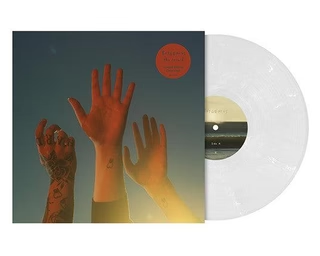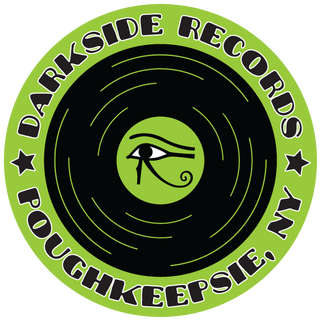Susanna Pisana- J.E. Bach: 6 Sonatas for Violin & Fortepiano

Johann Ernst, the third-born son of Johanna Sophia Siefer and Johann Bernhard Bach, was a musician and organist at the Georgenkirche in Eisenach. He was taught first by his father and then, from January 1737 in Leipzig by his uncle and godfather Johann Sebastian Bach, when he moved there to attend the Thomasschule and later to study law. He was forced to abandon his studies there in 1741 upon being called back to Eisenach to help his ill father, and though Ernst missed the musical activity at Leipzig he was persuaded by Johann Sebastian to remain by his father's side. He eventually succeeded him in the organist post at Eisenach in 1749. J.E. Bach's 6 Sonatas for fortepiano & violin are among the few works the composer managed to have published during his lifetime: the first three in 1770 and the remainder in 1772. Although critics deemed them to be 'too modern', they were received so well by the public that a new edition was released in 1775. Their title does not bear the designation 'with violin accompaniment' typical of the time but rather 'sonatas for fortepiano and a violin': the two instruments are afforded equal importance. In the final three sonatas, the structures become more complex and reveal inspiration from early proponents of classicism like C.P.E. Bach. Although Johann Ernst was known as an organist and harpsichordist, the writing in the fast movements and the lyricism of the slow sections, as well as his inclusion of dynamic markings, suggest that these works were designed for the newly invented fortepiano. All six sonatas are divided into three movements, alternating fast-slow-fast in line with Italian symphonic style. Other information: - Recorded July 2023, Capranica, Italy - Bilingual booklet in English and Italian contains liner notes by the artists, as well as their biographies - Susanna Pisana plays a violin by Bernardo Calcagni (c.1740); Maurizio Paciariello plays a fortepiano built by Ugo Casiglia, after a model by Anton Walter (1798) - Johann Ernst Bach (1722-1777) was a distinguished composer of the Bach musical dynasty, though less recognized than his famous relatives. As the youngest son of Johann Sebastian Bach's half-brother, he inherited a legacy of musical genius. In his early life, Bach studied at the Lateinschule in Eisenach from 1732 to 1735. On 16 January 1737 he entered the Thomasschule in Leipzig, where he then became a pupil of his uncle Johann Sebastian Bach. Being a student of J.S Bach, he assisted his uncle in copying his music. Later he became Hofkapellmeister in Eisenach. - Johann Ernst's compositions, spanning vocal works, chamber music, and keyboard pieces, shows his innovative approach, blending the Baroque style of his family with emerging Classical elements. - This new recording presents 6 sonatas for violin and fortepiano. The writing of the fast movements and the cantabile of the slow ones, as well as the presence of dynamic indications, suggest that these works are aimed at the new piano, not the harpsichord. - Played by Maurizio Paciariello and Susanna Pisana.
Johann Ernst, the third-born son of Johanna Sophia Siefer and Johann Bernhard Bach, was a musician and organist at the Georgenkirche in Eisenach. He was taught first by his father and then, from January 1737 in Leipzig by his uncle and godfather Johann Sebastian Bach, when he moved there to attend the Thomasschule and later to study law. He was forced to abandon his studies there in 1741 upon being called back to Eisenach to help his ill father, and though Ernst missed the musical activity at Leipzig he was persuaded by Johann Sebastian to remain by his father's side. He eventually succeeded him in the organist post at Eisenach in 1749. J.E. Bach's 6 Sonatas for fortepiano & violin are among the few works the composer managed to have published during his lifetime: the first three in 1770 and the remainder in 1772. Although critics deemed them to be 'too modern', they were received so well by the public that a new edition was released in 1775. Their title does not bear the designation 'with violin accompaniment' typical of the time but rather 'sonatas for fortepiano and a violin': the two instruments are afforded equal importance. In the final three sonatas, the structures become more complex and reveal inspiration from early proponents of classicism like C.P.E. Bach. Although Johann Ernst was known as an organist and harpsichordist, the writing in the fast movements and the lyricism of the slow sections, as well as his inclusion of dynamic markings, suggest that these works were designed for the newly invented fortepiano. All six sonatas are divided into three movements, alternating fast-slow-fast in line with Italian symphonic style. Other information: - Recorded July 2023, Capranica, Italy - Bilingual booklet in English and Italian contains liner notes by the artists, as well as their biographies - Susanna Pisana plays a violin by Bernardo Calcagni (c.1740); Maurizio Paciariello plays a fortepiano built by Ugo Casiglia, after a model by Anton Walter (1798) - Johann Ernst Bach (1722-1777) was a distinguished composer of the Bach musical dynasty, though less recognized than his famous relatives. As the youngest son of Johann Sebastian Bach's half-brother, he inherited a legacy of musical genius. In his early life, Bach studied at the Lateinschule in Eisenach from 1732 to 1735. On 16 January 1737 he entered the Thomasschule in Leipzig, where he then became a pupil of his uncle Johann Sebastian Bach. Being a student of J.S Bach, he assisted his uncle in copying his music. Later he became Hofkapellmeister in Eisenach. - Johann Ernst's compositions, spanning vocal works, chamber music, and keyboard pieces, shows his innovative approach, blending the Baroque style of his family with emerging Classical elements. - This new recording presents 6 sonatas for violin and fortepiano. The writing of the fast movements and the cantabile of the slow ones, as well as the presence of dynamic indications, suggest that these works are aimed at the new piano, not the harpsichord. - Played by Maurizio Paciariello and Susanna Pisana.





